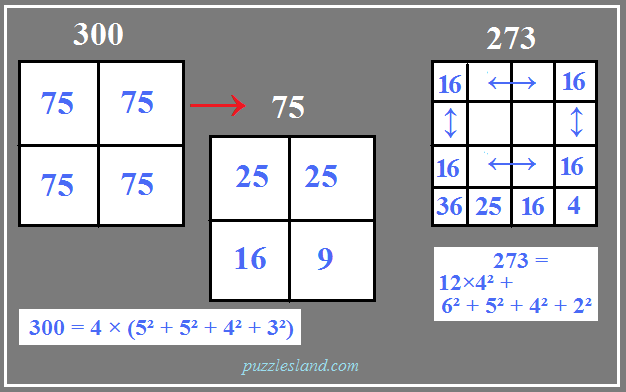

| Interesting Math Problem | Math Problems Home | Home | Send Feedback |
 In this diagram we see how to divide a square into
either 4, 6, 7, or 8 smaller squares, not necessarily
all the same size.
In this diagram we see how to divide a square into
either 4, 6, 7, or 8 smaller squares, not necessarily
all the same size.
Then within any of them, we can subdivide one of those squares into 4, adding 3 to the total.
Since 6, 7, 8 are consecutive integers, then we can add any multiple of 3 to any of them in this fashion, and thereby reach any larger number as well.
Using the technique shown for 6 or 8, we can construct any even number. For even number n, choose k such that k = n/2.
Then, divide the side of the original square into k parts and construct small squares of size 1/k by 1/k * size of original square along the bottom and the left side. There will be 2 * (k-1) + 1 = 2k - 1 small squares, and one larger one.
Then to reach any odd number, n+3, subdivide one of the n squares into 4,
adding 3 to the total. We already have n = 7, and then we get
6 + 3 = 9, 8 + 3 = 11, 10 + 3 = 13, etc.
Of course there will be many ways other than these few of achieving the task.
If n is a square,
then you can make a sqrt(n) x sqrt(n) grid.
For n >= 24, let n = 4k+j (j = 0,1,2,or 3)
you can divide the square into quadrants,
and then subdivide j of them into k+1 squares, and
4-j of them into k squares, for a total of 4k+j.
Or use a "divide and conquer" method as shown here.
